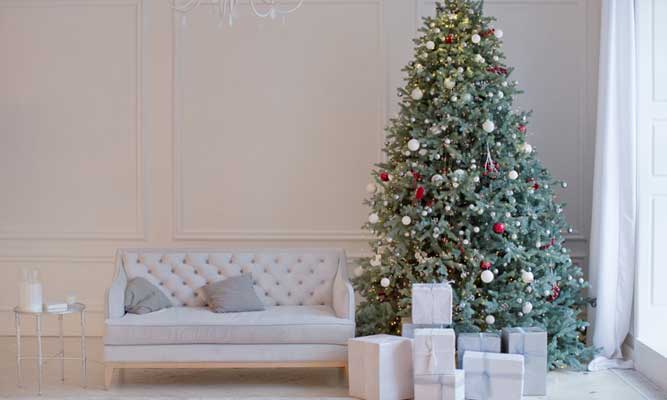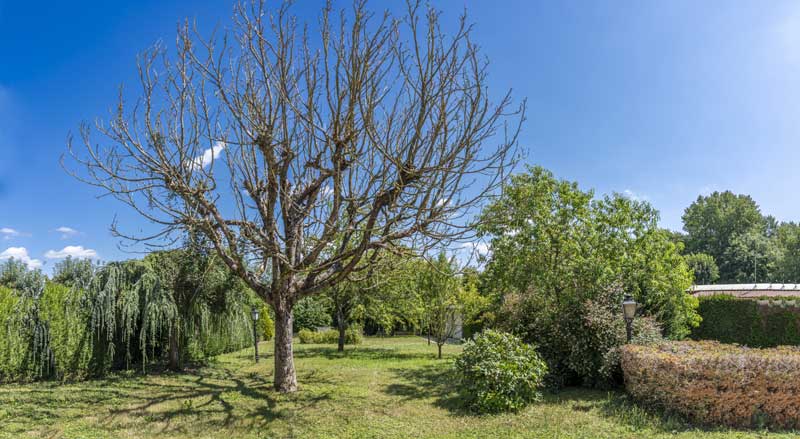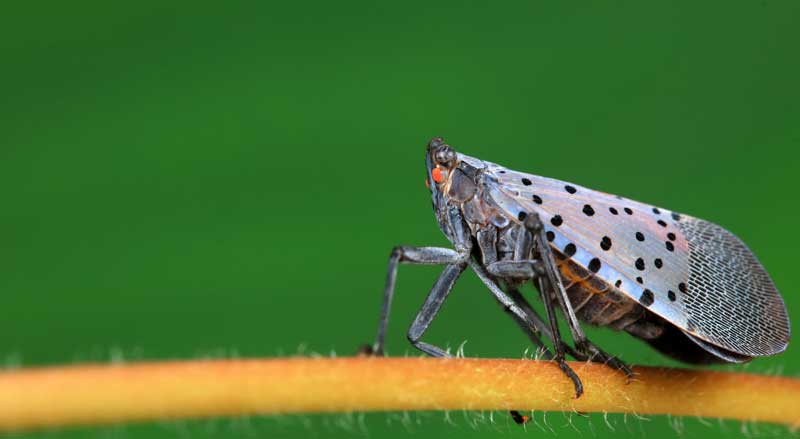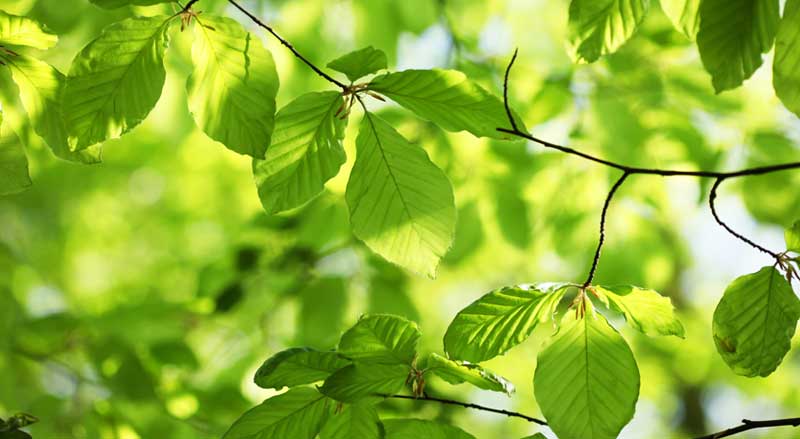Keeping your cut tree healthy, fragrant, and happy doesn’t take hard work. It’s simply a matter of knowing what your tree needs.
How Long Should Your Tree Last?
When you take care of your tree, it should last a good four to five weeks. Plan accordingly, so your tree still looks great on Santa’s big day.
Here in New Jersey, we have many varieties of evergreens available. They vary in fragrance, needle shape, fullness, and branch strength.
If you like to put your tree up early in the holiday season, you will do well with a Fraser Fir, Douglas Fir or Concolor Fir. These evergreens keep their needles for a long time.
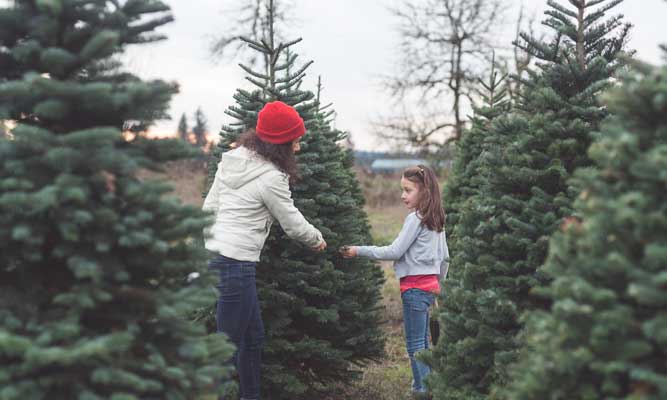
It All Starts with a Healthy Tree
You can buy a tree at a nursery, tree farm, or roadside stand. Don’t buy a tree that was cut over three or four weeks ago.
Look for a tree that isn’t losing needles. Gently brush your hands over a branch. If more than a very few needles become loose, find a fresher tree.
Other things to look for are:
- Firm and flexible needles
- Pliable outer branches
- Evenly colored branches and needles
- Smooth tree bark
And don’t forget to check out the tree’s aroma. It should be strong, fresh, and pleasing.
Prepare Your Tree for Its Trip Home
Treat your tree gently, right from the start. Rough treatment can cause it to drop needles and develop bare spots.
Ask the attendant to make a one inch cut on the trunk bottom to help it drink up water when you get home.
When it’s time to load the tree onto your car:
- If the tree is in netting, leave it on. If there is no netting, wrap the tree in a blanket or tarp. This will help keep the tree from drying out.
- Carefully load your tree into your car or secure it on top with rope or bungees. If you’re not using a roof rack, open the car doors and tie the tree to the roof. Make sure it’s well secured. When the car doors close, they will further secure the rope. (Don’t do this through open car windows.)
- Have the tree’s stump face the front of your car to prevent wind damage.
- If the tree extends over your car’s bumpers, tie flags on the ends of the tree to alert drivers.
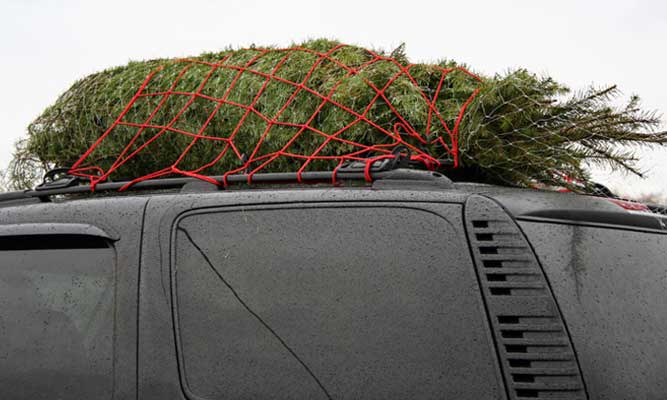
How To Acclimate Your Tree
Immediately upon arriving home, gently unsecure the tree from your car.
If possible, give the trunk another perpendicular trim before immersing it in water. Trim at least ¼-inch, up to 1 inch. This removes dried sap and helps the trunk soak up water.
Immediately put the tree in a bucket of water.
Leave it in your garage or basement, in lukewarm water, for one or two days. This will keep the tree from stressing and losing needles prematurely.
If this isn’t possible, make sure it gets into water within 24 hours of arriving home.
Some people prefer to store the tree in a filled bucket outside. If you do this, keep the tree in the shade and be sure no storms or freezes are expected.
If the tree is too tall for your home, you can cut more off the trunk.
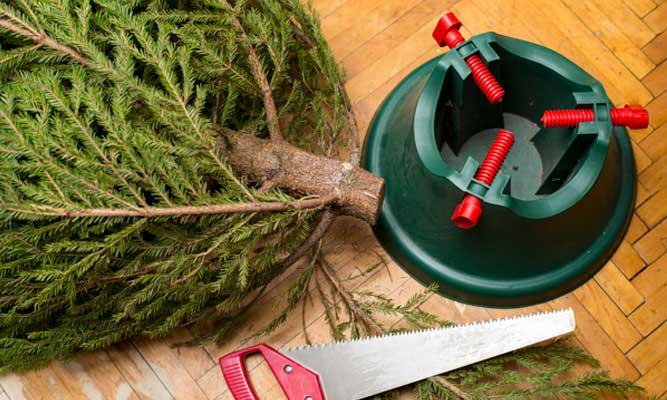
How to Keep Your Cut Tree from Dying
The key to maintaining a cut tree is to keep its stand full of water. Your tree will stay healthier longer, and it won’t become a fire hazard.
More about water and your tree’s environment
A good rule of thumb is your tree needs one quart of water for every inch in its trunk’s diameter. But it’s impossible to over-water a Christmas tree, so don’t be afraid to be generous.
- Check the tree stand’s water levels daily. In fact, for the first week, check the water level twice daily. Healthy Christmas trees are very thirsty. Never let the stand become dry.
- You can add a few tablespoons of sugar to the water. How does sugar water help keep a Christmas tree alive? It’s said that it creates an artificial sap or food for the tree. You also can buy a product at your local hardware store or nursery that prolongs the tree’s life. But plain water will suffice.
- Keep the tree away from heat or cold drafts. Don’t place it near heating vents, fireplaces, or space heaters. This also creates a fire hazard.
- Avoid placing the tree in direct sunlight. Strong sunlight can make the tree fade faster.
- If you have a humidifier, run it.
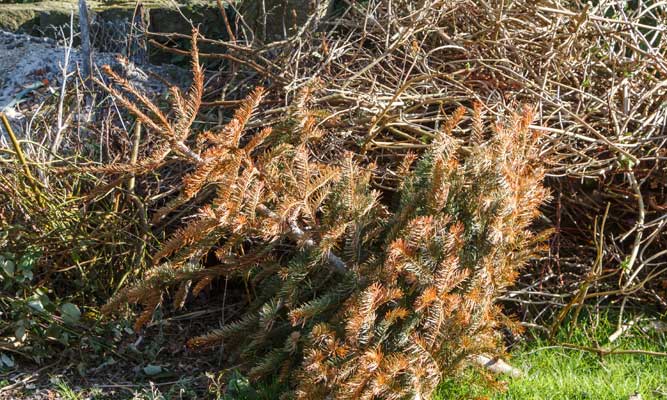
Your Christmas Tree Still Has Work to Do
Once the festivities are over, and you safely packed away your ornaments, it’s time to dispose of your tree.
Many municipalities have Christmas tree pickup dates when you can leave your tree by the curb.
Some people prefer to prolong their tree’s usefulness. They put it in the backyard where birds and animals can make it their winter shelter. If you do this, place the tree a suitable distance from your house. You don’t want to encourage critters to visit your home.
Old Christmas trees also make excellent woodchip mulch. Put your tree through a shredder and months later use woodchips as mulch for trees and shrubs.

